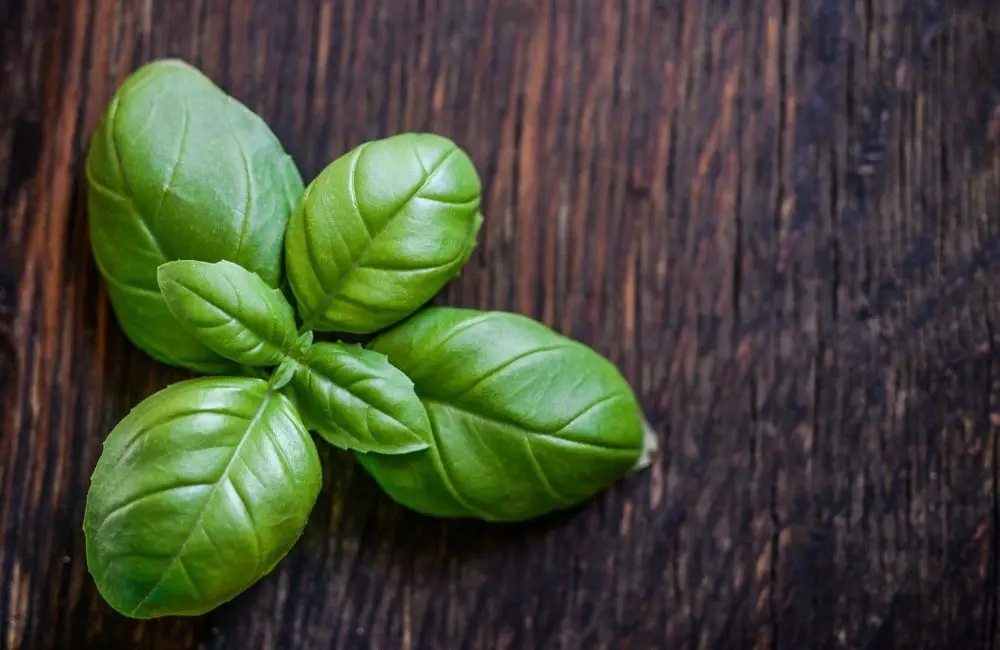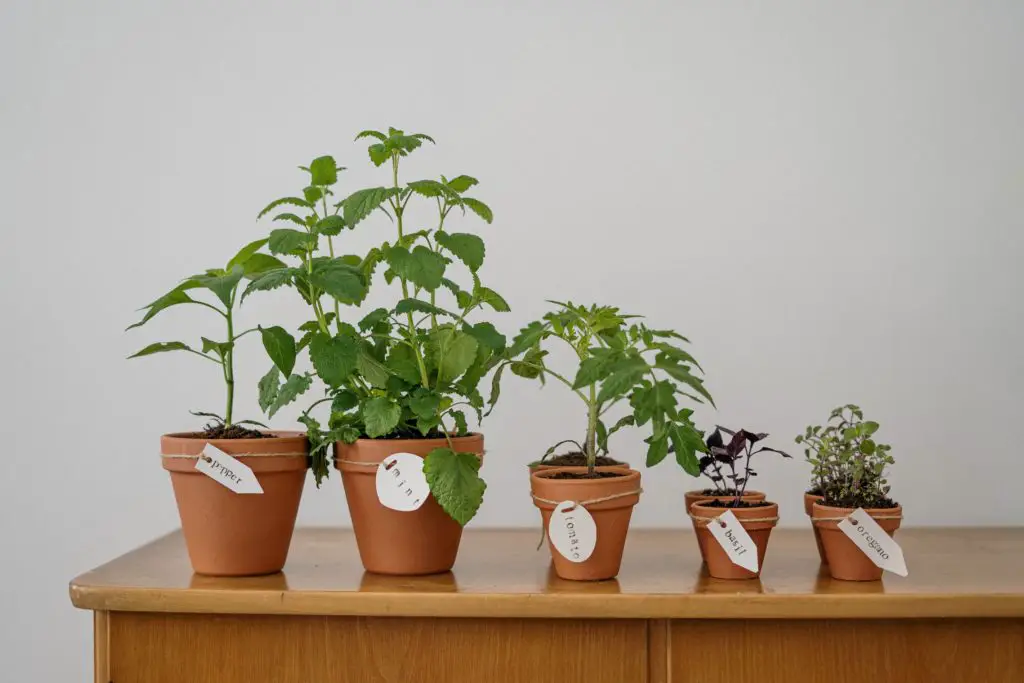
How to dry Basil? A very common question and query coming from home cooks’ regarding food plating and styling is: “How can my plate of food become pretty and attractive?” Most often we strive to achieve the balance of flavors and over-all look of the plate that exist in the restaurant quality dishes. A very simple solution to achieve THAT level of expertise, flavor and plating is to master the art of using the right herb in the right quantity with the rite ingredients. Herbs may look small and negligible and incapable of making a big difference but the massive amount of flavor and taste they can add while balancing the overall palate of the dish is remarkable.
The factor that sets apart home cooked meals and restaurant quality dishes is the smart use of the right ingredients. An ingredient that has the ability to add loads and loads of flavor and aroma to any dish is herbs. Herbs are capable of making the dishes appear amazing, appealing and mouth watering (all while tasting like an utter delicacy). The top tip for plating appealing and tasty plates of food is to: ”make bites of flavor on your plate”.
Basil One of the Worlds Most Popular Herb
Herbs play a big role in adding these pockets of flavor. Most of the herbs can be used both in fresh and dried form. These tiny leaves are able to introduce bundle of flavors yet are the most underrated and unappreciated ingredient. One of the most widely used herbs is Basil. It is an extremely versatile herb with a flavor palate touching lines with mint and pepper.
Basil can be used both in fresh and dried form. In fresh form Basil has slightly broader green leaves whereas Basil leaves can be dried to smaller, curled and crunchy leaves that can be crushed into a course or fine powder. Basil is one of the most appreciated and used herb all around the world and is known to go best with beans, mint and cauliflower. But the world is yours to experiment and use this beautiful herb in whatever way you want. Either top your salads and pizza’s with the large leaves of Basil or add shine, color and character to a dish by decorating tarts and steaks with fresh and dried basil for crunch and flavor.
Basil is as good in dried form as it is in fresh form. The internet is full of information that describes how to use basil or in what dishes can basil be used but if you are a novice and are interested with facts and information describing the A-Z of Basil’s lifecycle then read on.
How to grow and harvest Basil?

Basil belongs to the mint family and is also known as the great Basil. Basil is available in a range and variety of flavors and variations such as the Thai Basil, Holy Basil and Lemon Basil but the most widely used and known is the Sweet Basil.
Sweet Basil and other forms are best grown in hot and dry conditions and are not well suited for cold regions. If you are a Basil lover and are interested in creating a herb garden of your own in your backyard or even in your kitchen window then take notice: Basil plant loves warmth and sunlight. It loves heat and just when the temperature drops around the autumn or winter season; the plant withers and dies. Also, the herb is best harvested during the time of mid morning because when the dew evaporates there is less or no moisture which can potentially cause mold growth. Basil is a sensitive plant and is not prone to colder weather conditions and that is why preserving this flavorful herb is a top priority of chefs, home cooks, foodies and herb enthusiast.
When the Basil leaves are being dried; the fresh leaves are carefully picked and gathered. The bruised leaves are excluded because they tend to go brown and even black during the process of drying. The entire process is handled with extreme care and caution because any miss-handling will only make the leaves lose their oil which ruins the flavor of the herb. Some experts say:
“Harvesting the leaves before the plant flowers, at the time when the leaves are lush and blooming since the leaves before the plant’s reproductive state has the highest concentration of aromatic compounds responsible for its unique flavor. Harvesting the leaves before the plant flowers, at the time when the leaves are lush and blooming since the leaves before the plant’s reproductive state has the highest concentration of aromatic compounds responsible for its unique flavor.”
What are the best ways to dry Basil?
Although Basil is an easy plant to grow and can easily be a great part of your kitchen garden. A small Basil plant can grow and flourish in to a big healthy plant and can make its way to your pesto, drinks, pizzas and sauces. The health of the happy Basil plant greatly suffers when the long summer days come to an end and here is how you can dry Basil to use this flavor herb all year long!
The easiest and most traditional way of drying fresh Basil is to sundry the leaves. All you need to do is to spread some leaves on a mesh or sheet and leave them under the sun. Make sure the wind is not too strong and the leaves are getting maximum sunlight in a day. This method is easy and eco-friendly.
Air Drying
This method is the oldest and perhaps the most conventional of all the available methods to dry basil. This one is the most economical of all the methods as well. Air drying basil requires no equipment or fancy gadgets and can be done anywhere and everywhere. Air drying requires you:
- To pick fresh basil leaves carefully not pressing or miss-handling any and tying some of the sprigs cautiously together. You can tie up some sprigs of fresh basil using a rubber band, string or a band.
- Next, you need to hang these sprigs upside down. The logic behind leaving them hanging down is to let the force of gravity act on the leaves so that they may dry in a closed faced position rather than open faced (which might make them fall off once semi-dried). Always remember to leave them hanging in a area that is clean of any pests and insects and also well-ventilated. The ideal and most optimal temperature to air dry basil is 15-20 degrees Celsius.
Air drying Basil takes almost 4-6 weeks time and that is why it may not be the most preferred method by all. Also, it requires maximum caution to have the leaves completely dry before they are left hanging because even a hint of moisture will allow mould to grow on the leaves making them go useless and inedible. Looking for a perfect spot to dry basil might also prove to be a challenge for many. If you are also not comfortable with this method of Basil drying or are short on time, then you can try other methods to dry Basil.
Using Microwave to Dry Basil
This technique of drying Basil is more convenient and doable. As the name suggests, this technique is all about drying basil in a microwave. This is a very easy method and also the end result is pretty close to what the traditional and more time taking techniques yield. Also, if you want some dried Basil on your hands right away then this is a perfect shortcut. In this method you need to:
- Get nice fresh Basil right from the plant and wash them thoroughly to remove any dirt and impurities from the leaves. Then, take some paper towel and gently but firmly pat dry all the leaves to make sure no traces of moisture is left on the leaves.
- Next, you need to place the dry fresh Basil leaves on a piece of paper towel and then place this paper towel on top of a microwave safe container.
- Turn on the microwave for 30 sec and keep heating the leaves for bursts of 30 seconds until the leaves dry and curl up.
You can also use the conventional gas or electric oven to dry Basil leaves. This technique is similar to drying them in a microwave but takes more time. You can have perfectly dried Basil leaves in the oven in just 20 minutes.
Using Food Dehydrator
Food dehydrator is the product of the technology. It is great for drying multiple food items and Basil is one of them. Using a food dehydrator is highly convenient and requires minimal effort and extends the life of your produce. You need to:
- Arrange the Basil leaves in the dehydrator and turn in on the lowest setting possible and that is it.
- The process may take 4 to 6 hours and the leaves will be perfectly dried to let you enjoy the goodness of Basil all year long!
Hope this article helps you understand the options available with drying basil and the different technique that can be used. Cheers!
